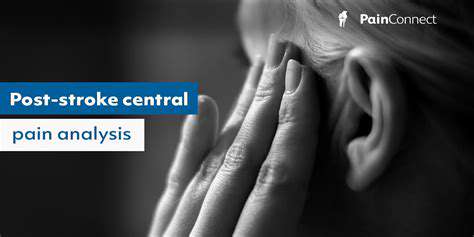Exploring Causes and Solutions for Left Sided Head and Ear Pain
Common Causes of Left-Sided Head and Ear Pain
Muscle Tension and Strain
Muscle tension is one of the most common causes of pain on the left side of the head and ear. It often arises from prolonged poor posture, stress, and overexertion in physical activities.
When muscles in the neck and jaw become tense, they can refer pain to the head and ear areas, resulting in discomfort that may be sharp or dull.
Practicing relaxation techniques, including stretching and deep breathing exercises, can be effective in alleviating muscle tension-related pain.
Temporomandibular Joint Disorders (TMJ)
TMJ disorders affect the joint that connects the jaw to the skull, leading to pain that can be felt in the ear and head on the affected side. Symptoms often include clicking sounds, jaw stiffness, and headaches.
The exact cause of TMJ disorders can vary, with factors such as teeth grinding, jaw misalignment, and arthritis contributing to the condition.
Management of TMJ pain may involve the use of mouthguards, physical therapy, and, in some cases, surgical interventions for more severe cases.
Migraine and Cluster Headaches
Migraines are a common type of headache that can cause severe, throbbing pain typically on one side of the head, often accompanied by nausea, light sensitivity, and sometimes ear discomfort.
Cluster headaches, though less common, also present with severe pain and primarily affect one side of the head, occurring in cycles and often during specific times of the day or night.
Both types of headaches can be managed through medications, lifestyle changes, and identifying triggers that may contribute to the occurrence of these painful episodes.
Infections and Inflammation
Infections such as sinusitis, otitis media (middle ear infection), and even shingles can lead to pain on the left side of the head and ear. These conditions often come with other symptoms like fever, congestion, and ear fullness.
Inflammation in the ear or sinuses can cause discomfort that radiates to the head, resulting in a sense of pressure and pain that can be quite debilitating.
Treatment usually involves antiviral or antibiotic medications, along with anti-inflammatory drugs to relieve symptoms and combat infections.
Neuralgia and Nerve-Related Disorders
Conditions like trigeminal neuralgia and occipital neuralgia can cause sharp, shooting pain along the nerves in the head and ear areas, primarily affecting one side of the body.
These disorders can lead to severe episodes of pain that may be triggered by everyday activities such as eating, touch, or movement.
Effective treatment for neuralgia may include medications to manage pain and inflammation, nerve blocks, and in some cases, surgical options if conservative measures fail.
When to Seek Medical Attention

Understanding the Symptoms
Left-sided head and ear pain can manifest in various ways, including throbbing, sharp, or dull aches. It is crucial to accurately describe these sensations to your healthcare provider to aid in diagnosis.
Additionally, accompanying symptoms such as dizziness, hearing loss, or visual disturbances may indicate a more serious underlying condition. Identifying these details can play a key role in determining the appropriate course of treatment.
Potential Causes of Pain
Several factors can contribute to left-sided pain in the head and ear. Common causes include tension headaches, ear infections, or even issues with the jaw, such as TMJ disorders. Understanding these possible origins is essential for effective management.
Moreover, more serious conditions such as migraines or neuralgia may also be responsible for the discomfort. Recognizing these symptoms early on can lead to prompt medical evaluations and intervention.
When to Consult a Doctor
It is vital to know when to seek medical help for left-sided head and ear pain. If the pain is severe, persistent, or accompanied by other alarming symptoms like high fever or sudden vision changes, immediate medical attention is required. Prompt action can be critical in preventing complications.
You should also consider seeking help if over-the-counter treatments are ineffective or if the pain disrupts your daily activities. Early intervention can lead to better management and quicker resolution of the underlying issue.
Possible Treatments and Home Remedies

Understanding the Root Causes
Left-sided head and ear pain can arise from various medical conditions, each with distinct causes. Common triggers include migraines, tension headaches, and ear infections. Understanding these underlying issues is essential for effective treatment. Stress and fatigue can exacerbate these conditions, often leading to increased discomfort.
In some cases, dental problems may also contribute to pain in the left side of the head and ear. For instance, issues with the jaw or teeth can lead to referred pain, resulting in significant discomfort. A thorough examination by a healthcare professional can help identify these potential causes.
Other possible contributing factors include sinus infections or allergies. These conditions can lead to inflammation and pressure around the ear and head, resulting in pain. It's crucial to recognize these symptoms early to prevent worsening of the condition.
Overall, a detailed understanding of the root causes can guide appropriate treatment solutions. By addressing the specific ailment causing the discomfort, individuals can find relief from their symptoms more effectively.
Available Medical Treatments
When dealing with left-sided head and ear pain, a variety of medical treatments are available. Over-the-counter pain relievers, such as ibuprofen or acetaminophen, can offer temporary relief from mild to moderate pain. Consulting a healthcare provider is recommended for persistent issues to ensure proper diagnosis and treatment.
In the case of infections, antibiotics may be prescribed to address the underlying bacterial issue. For conditions like migraines, specific medications aimed at alleviating symptoms may be suggested. It's essential for individuals to follow their doctor's advice regarding medication to avoid potential side effects.
Alternative therapies, including physical therapy and acupuncture, may also provide significant relief. Such treatments can target tension and promote relaxation, often alleviating pain. Each individual's response to treatment can vary, emphasizing the importance of tailored approaches.
Regular follow-up appointments with healthcare providers can help monitor progress and adjust treatment plans as necessary. Staying informed about one’s condition allows for proactive management, ensuring effective pain control.
Home Remedies for Relief
Home remedies can supplement medical treatments and provide additional relief for left-sided head and ear pain. Simple practices, such as applying a warm compress to the affected area, can help reduce pain and inflammation. Rest and hydration play crucial roles in recovery, so individuals should ensure they are taking care of themselves properly.
Additionally, practicing relaxation techniques, such as deep breathing or meditation, can assist in managing stress-related pain. Creating a calming environment can further promote relaxation and reduce discomfort. Maintaining a regular sleep schedule also contributes to better overall health.
Herbal teas, such as chamomile or peppermint, may offer soothing effects and pain relief. Certain essential oils, like lavender and eucalyptus, can also help alleviate headaches when used in aromatherapy. These natural remedies can enhance well-being and complement other treatment methods.
Lastly, keeping a symptom diary can be beneficial for tracking pain triggers and responses to different remedies. This practice allows individuals to identify patterns, enabling them to optimize their approach to pain management over time.
Preventive Measures
Understanding Left-Sided Head and Ear Pain
Left-sided head and ear pain can be a perplexing symptom, often attributed to a variety of underlying causes. Understanding its origin is crucial for accurate diagnosis and effective treatment.
This type of pain may arise from tension headaches, migraine attacks, or even ear infections, which often present with localized discomfort. It is essential to differentiate the exact cause to tailor the management plan accordingly.
In some cases, referred pain from dental issues or neck problems can manifest as discomfort in the head and ear region, complicating the identification of the source of pain.
Patients may also experience associated symptoms such as dizziness, tinnitus (ringing in the ears), or sensitivity to light, which can help healthcare providers pinpoint the cause.
To navigate left-sided head and ear pain effectively, patients are encouraged to maintain a detailed symptom diary, noting when the pain occurs, its intensity, and any related factors.
Common Causes of Left-Sided Head and Ear Pain
Several medical conditions can lead to left-sided head and ear pain, including tension-type headaches. These headaches are often characterized by a dull, aching sensation that can extend to the ears.
Migraine headaches may also cause unilateral pain, with additional symptoms such as nausea and light sensitivity. Understanding the triggers for migraines is crucial for effective management.
Ear infections or conditions like temporomandibular joint (TMJ) dysfunction can cause pain that radiates to both the head and ear. Infections often come with accompanying symptoms like fever or fluid drainage.
Additionally, cervical spine issues, such as herniated discs or muscle strain in the neck area, may refer pain to the left side of the head and ear, complicating diagnosis if not properly assessed.
Finally, sinusitis or other inflammatory conditions in the upper respiratory tract can lead to left-sided head and ear discomfort, emphasizing the need for a thorough evaluation by a healthcare professional.
Effective Solutions and Treatments
Addressing left-sided head and ear pain typically involves a multi-faceted approach. Pain relief may be achieved through over-the-counter analgesics such as ibuprofen or acetaminophen, which can help alleviate immediate discomfort.
Physical therapy is often recommended for patients suffering from TMJ dysfunction or cervical spine issues, helping to relieve tension and restore proper function.
For migraine sufferers, preventive medications may be beneficial, and identifying triggers, such as stress or dietary factors, is crucial for reducing frequency and severity.
If an ear infection is present, antibiotics or other medications may be necessary to combat the underlying infection. It’s important to follow your healthcare provider’s guidance on treatment options.
Lastly, incorporating lifestyle changes such as regular exercise, proper hydration, and stress management techniques like yoga or meditation can significantly impact the frequency and intensity of episodes of left-sided head and ear pain.

